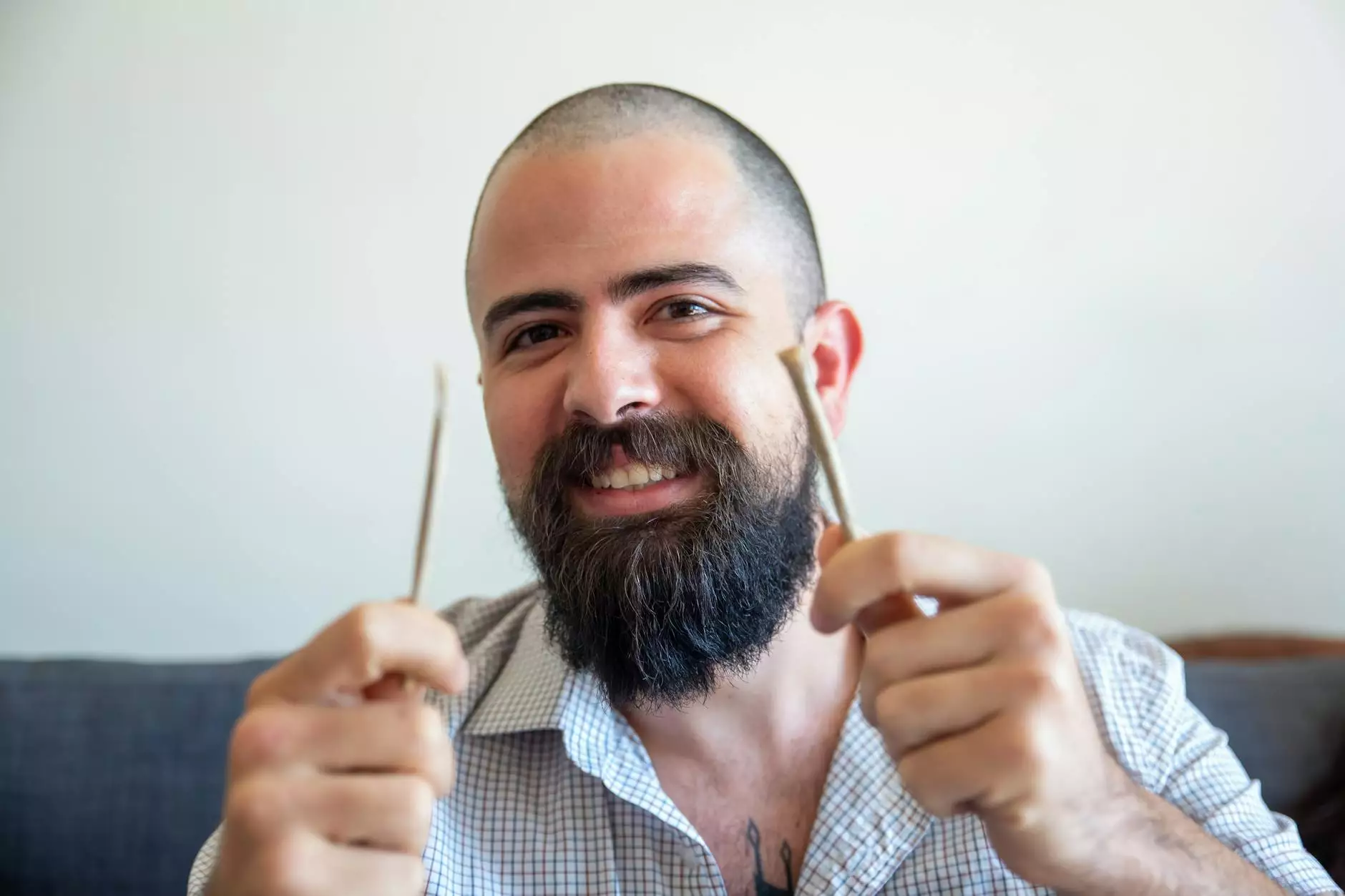Comprehensive Guide to Shoulder External Rotation Pain: Causes, Treatments, and Prevention

Shoulder external rotation pain is a common concern affecting athletes, workers, and individuals engaged in repetitive or physically demanding activities. The shoulder joint's incredible range of motion makes it susceptible to injuries and discomfort, especially in its external rotation movement. Recognizing the underlying causes and knowing the most effective treatment options can significantly improve quality of life and restore optimal shoulder function.
Understanding Shoulder External Rotation and Its Importance
The shoulder joint, or glenohumeral joint, is one of the most mobile joints in the human body. Its capacity to perform external rotation—where the arm rotates away from the body's midline—is crucial for various daily activities, sports, and occupational tasks. Whether you're reaching behind your back, throwing a ball, or performing physical therapy exercises, shoulder external rotation plays a vital role.
Shoulder external rotation pain can interfere with these activities, leading to discomfort, decreased mobility, and potential chronic issues if left unaddressed. It’s essential to understand how this movement works and what can cause pain during or after performing it.
Common Causes of Shoulder External Rotation Pain
Several factors can contribute to shoulder external rotation pain, often stemming from injuries, overuse, or degenerative conditions.
1. Rotator Cuff Tendinopathy or Tear
The rotator cuff consists of four muscles and tendons that stabilize and move the shoulder joint. Tendinopathy or tears, especially in the infraspinatus and teres minor muscles responsible for external rotation, may cause pain during rotation movements.
2. Shoulder Impingement Syndrome
This occurs when shoulder tendons or bursa are compressed during shoulder movements, particularly in overhead activities. Impingement can cause localized pain during external rotation, often worsened by repetitive motions.
3. Labral Tears
The glenoid labrum is a fibrocartilaginous rim that deepens the shoulder socket, providing stability. Traumas or repetitive stress can cause tears, which may result in pain during external rotation, especially if the tear involves the anterior or posterior labrum.
4. Bursitis
Inflammation of the bursa, a fluid-filled sac that cushions shoulder tendons, can lead to pain and restricted movement, notably during external rotation.
5. Frozen Shoulder (Adhesive Capsulitis)
This condition leads to stiffness and pain in the shoulder joint, often impairing external rotation and other movements.
6. Overuse and Repetitive Strain
Engaging consistently in activities like swimming, tennis, or repetitive lifting can cause inflammation and irritation of shoulder structures, resulting in soreness during external rotation.
7. Other Factors
- Degenerative joint disease (arthritis)
- Shoulder dislocation or subluxation
- Prolonged immobilization leading to muscular atrophy
- Poor biomechanics or muscle imbalance
Symptoms Associated with Shoulder External Rotation Pain
Understanding the symptoms can help in early diagnosis and effective management of shoulder issues. Common signs include:
- Sharp or aching pain during external rotation movements
- Stiffness or reduced range of motion
- Weakness in the shoulder or arm
- Swelling or tenderness
- Popping or clicking sounds during shoulder movements
- Discomfort at night or during specific activities
Diagnostic Approaches for Shoulder External Rotation Pain
Accurate diagnosis is key to effective treatment. Healthcare professionals, including chiropractors and medical doctors specialized in orthopedics or sports medicine, typically perform a comprehensive assessment:
- Clinical history and symptom review
- Physical examination focusing on range of motion, strength, and stability tests
- Imaging studies such as MRI, ultrasound, or X-rays to identify soft tissue injuries or degenerative changes
- Specialized tests to pinpoint specific injuries or impingements
Effective Treatment Strategies for Shoulder External Rotation Pain
The approach to managing shoulder external rotation pain depends on the underlying cause, severity, and individual patient factors. A combination of therapies often yields the best results.
1. Rest and Activity Modification
Reducing or avoiding activities that exacerbate pain allows inflamed tissues to heal. Gradually reintroduce movements once symptoms improve.
2. Physical Therapy and Rehabilitation
Targeted therapy programs are essential, focusing on restoring range of motion, strengthening shoulder stabilizers, and correcting movement patterns.
- Stretching exercises to improve flexibility in shoulder muscles and tendons
- Strengthening exercises for rotator cuff, scapular stabilizers, and surrounding musculature
- Proprioception training to enhance shoulder joint awareness and control
- Manual therapy techniques to improve joint mobility and reduce inflammation
3. Non-Steroidal Anti-Inflammatory Drugs (NSAIDs)
Medications like ibuprofen or naproxen can help reduce pain and inflammation during acute phases.
4. Advanced Interventions
- In cases of persistent or severe injury, corticosteroid injections may be recommended to control inflammation.
- In some instances, surgical intervention may be necessary to repair torn tendons or labral tears, or to correct impingement.
5. Chiropractic Care and Alternative Therapies
Chiropractic practitioners can provide hands-on adjustments, soft tissue therapies, and guidance on postural correction to relieve shoulder external rotation pain and improve function.
Preventative Measures to Avoid Shoulder External Rotation Pain
Prevention is always better than cure. Incorporating certain habits can significantly lower the risk of developing shoulder issues related to external rotation:
- Maintain proper biomechanics during sports and daily activities
- Engage in regular shoulder strengthening and flexibility exercises
- Warm-up adequately before physical activity and cool down afterward
- Practice correct lifting techniques to avoid undue shoulder stress
- Avoid repetitive strain by alternating activities and incorporating rest periods
- Optimize posture and ergonomics inWork and daily tasks to reduce shoulder overload
- Seek professional evaluation if experiencing persistent discomfort to prevent worsening injuries
Role of Health & Medical Professionals, Including Chiropractors, in Managing Shoulder Conditions
Professional assessment and intervention are vital for effective management of shoulder external rotation pain. Healthcare providers such as chiropractors, orthopedic specialists, physical therapists, and sports medicine doctors play critical roles:
- Chiropractors utilize manual adjustments, soft tissue therapy, and rehabilitative exercises to restore proper biomechanics and reduce pain.
- Orthopedic surgeons evaluate structural damages requiring surgical repair.
- Physical therapists develop personalized rehab programs to strengthen and stabilize the shoulder.
- Medical doctors prescribe medication or recommend advanced interventions as needed.
Conclusion
Shoulder external rotation pain can significantly impact daily life, sports performance, and overall well-being. Understanding the intricate anatomy of the shoulder, recognizing common causes, and seeking early professional guidance are essential steps toward effective recovery. With the right combination of rest, targeted therapy, prevention strategies, and professional intervention, individuals can not only alleviate pain but also enhance shoulder resilience and function in the long term.
Addressing shoulder issues holistically, especially through expert medical and chiropractic care, ensures comprehensive treatment that restores mobility, reduces discomfort, and prevents future injuries. Prioritize your shoulder health today to enjoy a pain-free, active lifestyle tomorrow.









